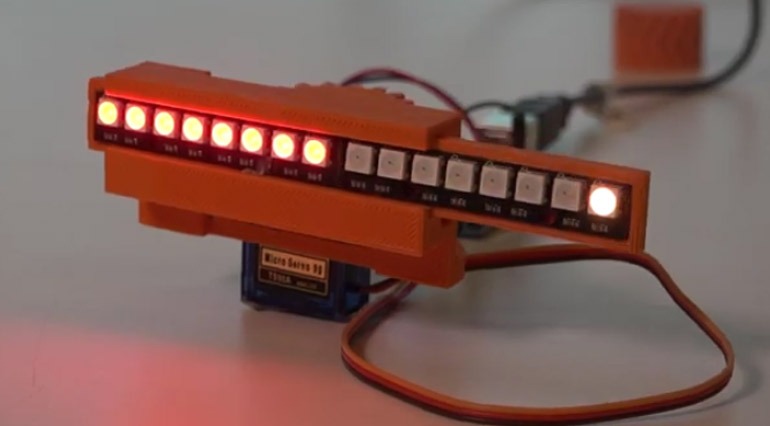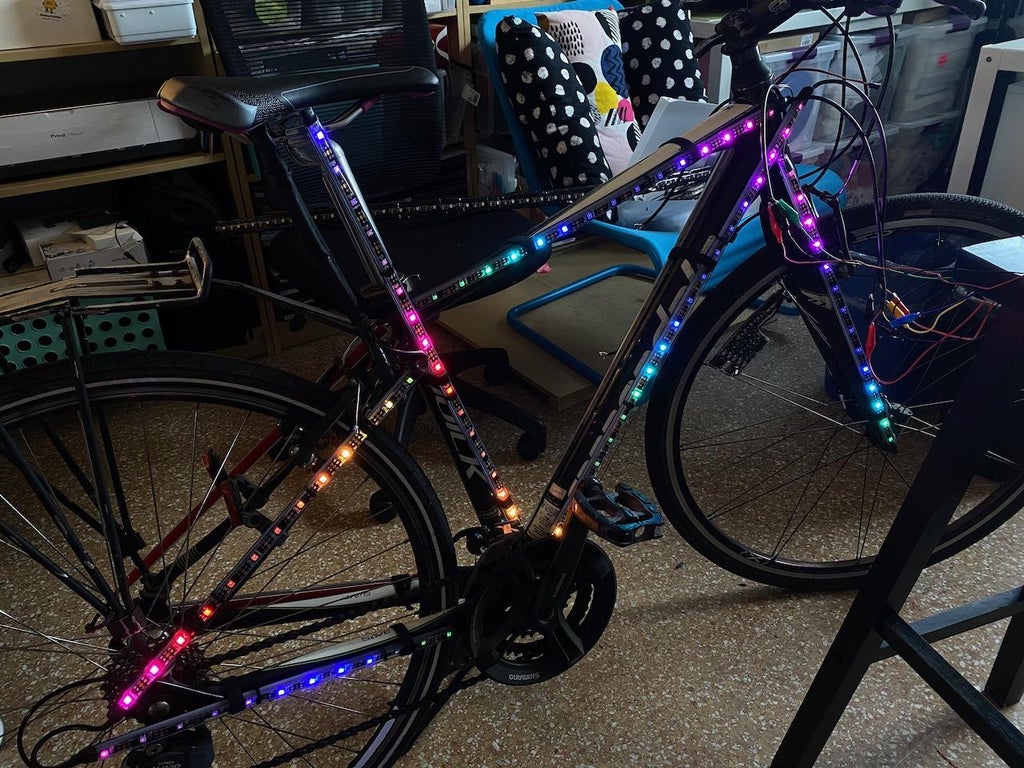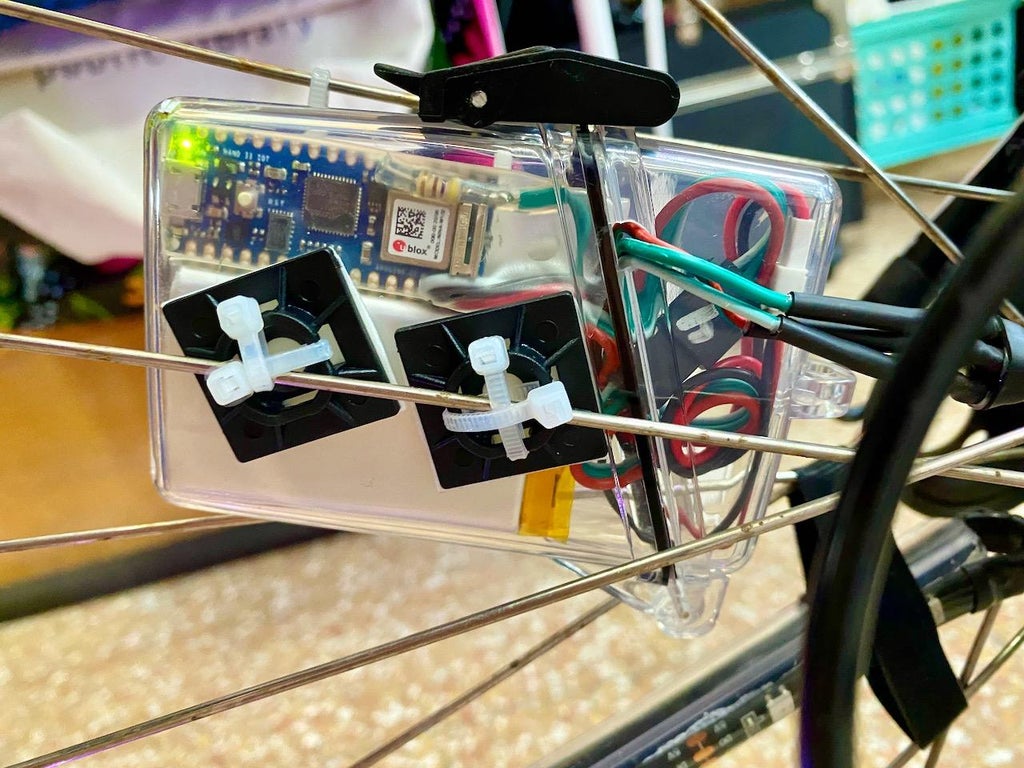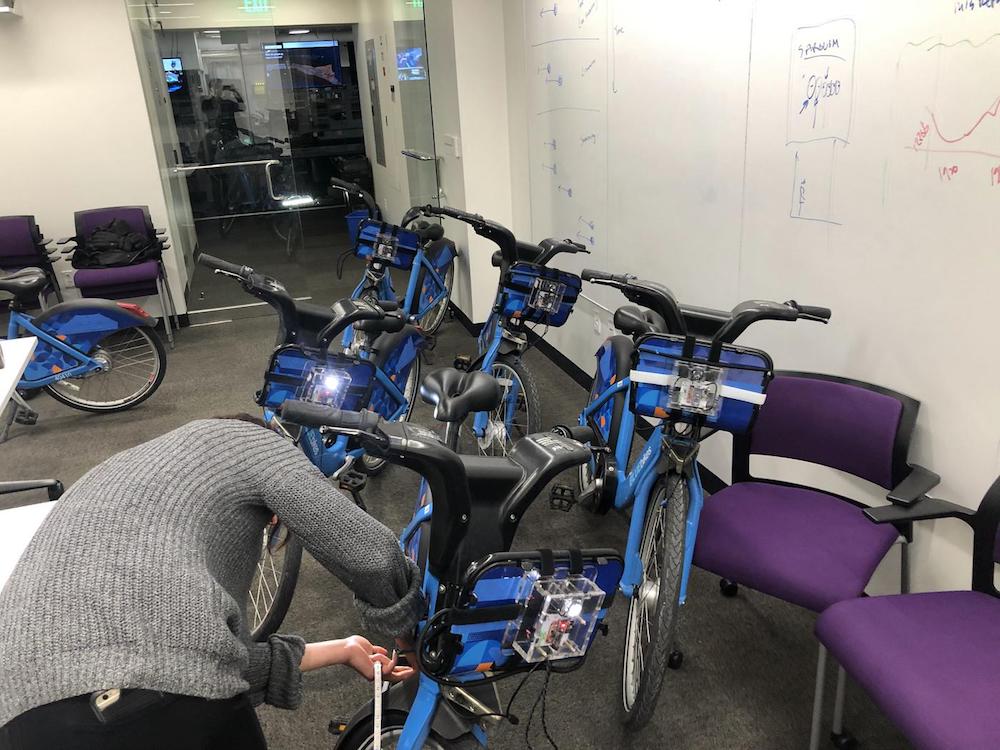24

Turn signals are becoming more and more popular with cyclists. So it’s no surprise that we’re seeing more and more Arduino projects that give people the tools they need to ride safely on our busy roads.
Motorized Turn Signals
The first question you might ask about Tom Ouwerkerk’s latest Arduino project is why it’s motorized. His objective was to make a turn signal unit that’s as compact as possible. When you consider the amount of space you have on a bicycle frame, it makes a lot of sense.
His solution was to use two 8-LED Neopixel strips, side-by-side. The small housing they’re mounted in has a servo that’s driven by an Arduino Uno. The servo slides the LED strips side to side as Tom make a turn signal.

The LEDs run in the turn direction to add a bit of movement to the signal as they slide to the side. It’s a great way to draw a bit of extra attention to the lights from the vehicles behind. This means the LED strips return to the center position to work as a break light when not turning. All of this in a 3D printed unit that’s no wider than the bicycle’s saddle. So you’re not going to kick (and break) as you get on and off.
3D Printing Practice
As much as a turn signal project, this was a 3D printing design project for Tom. He was experimenting with creating herringbone gears, which transfer power smoothly with excellent torque. But creating the chevron pattern is tricky, due to the precision required.
Clearly Tom nailed it, though. You can see from the video of his turn signal project that the servo is moving the LEDs easily and smoothly.
We’d be interested in seeing the controls Tom’s using, too. Presumably handlebar mounted switches or buttons for the turn signals and brakes. It’d also be interesting to know if it’s something that can run from batteries and a dynamo.
The post Super Compact Motorized Turn Signals for a Bike appeared first on Arduino Blog.





